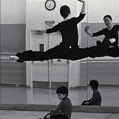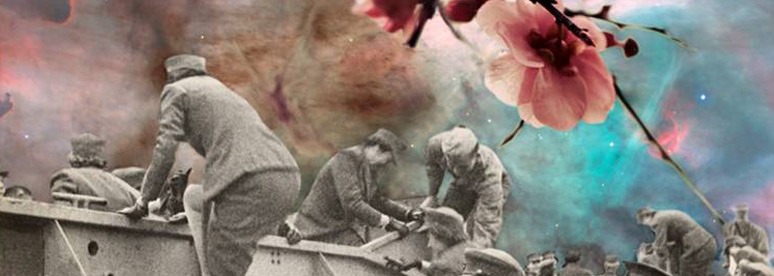PAST EXHIBITION

Subjects of Power and Devotion
A exhibition curated by Fabian Goncalves
February 2008 – June 17, 2008
ABOUT THE EXHIBIT
Subjects of Power and Devotion
“Fetishism takes us into the realm where fantasy intervenes in representation; to the level where what is shown or seen, in representation, can only be understood in relation to what cannot be seen, what cannot be shown. Fetishism involves the substitution of an object for some dangerous, powerful but forbidden force.” (Stuart Hall)
Objects have a mysterious ability to attract our attention, our desire, and our intrigue. This ability can simply (or not so simply) derive from the aesthetics of the object, or through the object functioning as placeholder for emotional or otherwise significant human experiences. This process is one of synthesis and condensation of elements that creates fetishes charged with religious or other forms of devotion and attraction. In the photographs collected for Subjects of Power and Devotion, the objects under the artist’s gaze are diverse, from human bodies to fragmentary landscapes, but all explore the way we honor, fetishize, and encode desire, memory and power into material substance, including our own bodies.
Photography has, since its creation, had a complex relationship with the human body. In many of the works in the exhibition, the body is fragmented by the artist’s representation, focusing on different aspects individually. Presented as devotional objects, the body thus becomes a series of potential fetishes or devotional sites. The body parts are objectified, re-contextualized, embedded with power, and given special attributes. Alternately, the body itself becomes a site of veneration and power, both a place for the subjective experience of power and a powerful object to others. In other images, the body is only present in its absence, in the trace it has made in the landscape, in the objects it has left behind, and in the ability of the camera to transport the viewer into spaces where others once were.
The fusion of these elements can be seen in the works of Katia Fuentes who uses her own body as a canvas for the representation of Mexican Saints, transforming herself into an object of veneration while simultaneously documenting a much more personal subjective experience. Fuentes uses spiritual images in a cumulative succession of cultural expressions imposed on the human body. In her series, As a Mexican Saint, the body becomes a “cultural uniform” for identity, religion, and heritage.
Charged objects and fetishes
Recontextualization is also the strategy of Puerto Rican artist Amy Tamayo. The objects that she fetishizes as well as the body parts displaced from their natural function or location take the form of rich and evocative photographs. Tamayo deliberately uses images that come directly from personal experiences of passion, love and suffering.
In Karla Tursios’s pictures, the substitution of the human body with inanimate objects encodes desire, sensuality and attraction, as in her “Cake” series. In these series, Tursios explores the relationship between desire and possession (as well as consumption as a part of the American Dream), by including elements of commercial and fashion photography in her staged photographs.
Coco Martin’s selection of culturally charged objects evokes memories from the happiest of times. Martin’s subjects transformed into fetish objects bring to mind strong emotions.
Santiago Cal explores the sense of isolation brought on by displacement in his neatly arranged still-life. The elements of Valise are individually injected with hope and used as symbols of ownership. The revelation of the content of the suitcase walks the line between private and public domains, making the viewer a voyeur. The book in his composition conveys the idea of freedom through imagination and literacy.
Fausto Ortiz associates the altruistic notion of the anonymity of super-heroes with illegal aliens, a sharp contrast to the common vilification and forced anonymity. Their presences are partially acknowledged by Ortiz in his work Sombras de Hierro, as they are by the society that receives the illegal immigrant.
Fragmentation and re-contextualization
In his Enigma series, San Francisco based artist Luis Delgado employs a very different procedure. Adopting a cooler, less personal eye, Delgado rearranges the human figure in culturally charged segments, creating a re-contextualized human body that solicits a new reading of heroes.
In her Mapping the Body series, Mary Daniel Hobson uses multi-layered collages to represent the human body as a cumulus of time, emotion, and traumatic experience. She draws an analogy between the human body- skin, muscles and bones- and layers in a collage along the way.
In Adriana Groisman’s selection from her Tango series, she captures the sensuality and bohemia of the Buenos Aires nightlife. Groisman’s fragmented photograph reveals more of the tango dancer’s lifestyle than perhaps the whole picture would- the iconographic ashtray and table cloth are clues. “There is nothing more fetishist than a shoe,” the artist claims.
In her photo-documentation project, _______ reaches beyond stereotypical depictions of ballerinas and acrobats by capturing them in the more intimate moments of their working process.
For Jaime Permuth’s series Tarzan Lopez, he followed the circus in Guatemala, capturing the acrobats and performers in their daily routines.
In Lucy Gray’s series, No More Red Shoes, the artist presents the ballerinas’ bodies as aesthetically and culturally charged objects. While ballet is usually seen as the embodiment of artistic perfection, Gray ventures behind the scenes at the San Francisco Ballet to depict the ballerinas as care giving mothers, placing a more human face on a refined artistic tradition.
In contrast with Lucy Gray and Jaime Permuth, Moises Castillo focuses on the devotional power of spectators at a rock concert in communion with their idols.
Narratives
The multidisciplinary artist Javier Manrique portrays the dynamic relationship between object and subject in his series Meltdown. By juxtaposing a camera with a heat gun, he develops a dialogue and lineal narrative similar to that of a fotonovela. His starting point is the interplay between these two objects, fueled by sarcasm and anti-heroism.
In selected photographs from his Book of Mirrors, GermanHerreracreates new images from his own preexisting ones. Each of the images is a cosmos of ideas conveyed through intimate textures and shapes, leaving a dichotomy for the viewer to resolve. Herrera’s subtle use of the elements in his subject matter provides clues for the viewer to interpret their narratives.
Like Herrera, Deborah O’Grady creates new images by juxtaposing preexisting photographs, as seen in her series War. She achieves this by using historic war photographs- consciously staying away from the most popular depictions of wounded soldiers and the catastrophes of war- and mixing them with satellite images of galaxies. By placing war into context with the broad and vast universe, she emphasizes its inherent absurdity.
Privacy, inner life and revelation
In contrast, Susannah Hays’ images are formed by applying a source of light to translucent objects to create photograms that highlight their smallness. The reflected light creates new patterns and forms, revealing specific characteristics of each object. Hays transforms common objects into something special, unique and attractive.
Memories and recollections
A photograph can be manipulated as part of the creative process, as in Kathryn Dunlevie re-created multi-dimensional urban landscapes. By taking photographs from different vantage points, creating more than one focal point, and smoothing the transitions with acrylic paint, Dunlevie shows things that are not there, creating an optical illusion that only the viewer’s mind can make sense of.
Perhaps the most common culturally and socially charged form of photography is the portrait. Sharon Wickham makes portraits of unusual street-found objects that have been tarnished by the wear and tear of daily use. These objects- her subjects- conjure up memories of ancestors, family, social status, and styles of the past, portraying social and cultural traits that can be understood by almost anyone.
Leah Oates’ Paradura series also alludes to the same fragmentation of memory. In these photographs she creates fictional landscapes that cannot be viewed as “real” but instead are seen as recollections of past events, thoroughly charged with highly personal emotions.

